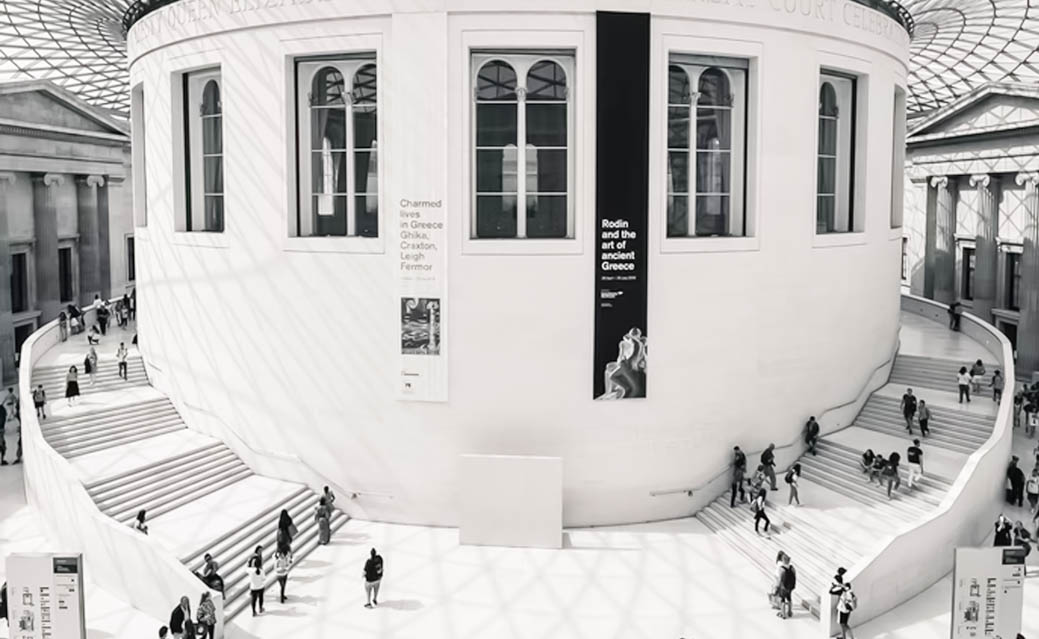Stolen history
Should museums return artefacts to their countries of origin?
The idea of stolen history is one that has recently risen to the surface of public consciousness. The British Museum especially has been the subject of intense criticism as it houses one of the largest collections of “stolen” artefacts in the world. In a list of the “14 things not to miss at the British Museum” published in the official museum blog, 11 of 14 artefacts are sourced from outside of Britain. It’s an absurdity that demonstrates the perpetuation of historical injustices.
The criticism toward former empires’ exhibiting cultural artefacts is not an uncommon occurrence outside of academic circles and it is often a point of contention in popular culture as well. In the 2018 Marvel film Black Panther, for example, the antagonist Killmonger asks the question “How do you think your ancestors got these? You think they paid a fair price? Or did they take it, like they took everything else?” It’s a question that captures the frustrations of the former colonies, who see the consistent refusal by governments and museums to repatriate ill-gotten artefacts as theft.
However, opinions on repatriation differ.
Some highlight the intellectual endeavour behind it all. In an article in The Guardian, former British Museum director Neil MacGregor writes that the establishment of the British Museum in 1753 was an act of “political radicalism” and “intellectual idealism”—a realisation of the “enlightenment conviction that knowledge and understanding were indispensable ingredients of civil society.” Artefacts like the Rosetta Stone, which was discovered in Egypt by Napoleon’s army in 1799 and has resided in the British Museum since 1802, are frequently invoked in favour of the argument that the stored cultural artefacts in museums are crucial sources of knowledge. The inscription upon the stone allowed historians to translate hieroglyphs and gain initial insights into ancient Egyptian language and culture. MacGregor concludes that the “civic purpose” of the museum is to forge arguments that defeat the “simplifying brutalities that disfigure global politics.”
Others argue that hosting artefacts from other cultures is a part of the humanitarian effort to protect threatened artefacts and by extension, threatened cultures from ideologically motivated “cultural cleansing.” The artefact industry was an unlikely victim of the myriad of conflict zones and the rise of militant groups that have increased in the Middle East. The territory of the self-declared Caliphate of the Islamic State, for example, included some of the richest artefacts and archaeological sites in the world—ancient Assyrian empires, Graeco-Roman civilisations, and ancient Muslim and Christian societies, which were targeted and destroyed, while others were looted and sold on the black market to fund the organisation. The former director of the British Museum emphasised the important role played by museums in conserving the culture of nations that were threatened, arguing that museums in the west were “guarding” artefacts till they could be returned under stable conditions.
Arguments against repatriation also highlight the difficulty in narrowing a single cultural owner of an artefact. The Cyrus Cylinder, for example, is an often-cited case of the complexity of narrowing the essence of an artefact in repatriation. The clay cylinder, upon which King Cyrus inscribed the conquest of Babylon and the return of Jewish people to Jerusalem in 539 BC, was heralded as the world’s first charter of human rights by the last Shah of Iran, Reza Shah Pahlavi, during the celebration of 2500 years of the Persian Empire in 1971. Thus, the artefact was considered an essential aspect of Iranian national identity. However, historians and archaeologists recognise that though the artefact does have a connection with Iranian history and culture, it is a part of the larger history of the Near East, Mesopotamian civilisation, and the Jewish diaspora.
Another artefact that embodies the complexity of repatriation is the Triumphal Quadriga, or the “Horses of Saint Mark.” The statues, classed as belonging to classical Greek or Roman antiquity, were looted from the Hippodrome in Constantinople, its home since the fourth century A.D., and stored in Venice in 1204, until it was moved by Napoleon to the Arc de Triumph in 1797, before it was once again relocated to Venice in 1982. Spending centuries at a time at each location, they undoubtedly influenced the culture of their host country as much as their host country influenced them. Professor Stefanidis of Aristotle University of Thessaloniki poses the crucial question: “Who, then, is entitled to claim ‘repatriation’ before the UNESCO Intergovernmental Committee?”
So, should museums return artefacts to their countries of origin? Perhaps the only natural conclusion that one can arrive at is that it depends. Legally speaking, artefacts that have been illegally extracted and stored in a foreign museum should rightfully be returned to their host country. But artefacts are often seen as sources for collaboration, as ambassadors of goodwill between countries, and thus should not be contained within the host country alone. Likewise, cultures that are threatened in conflict zones deserve to be protected by countries that have the infrastructure to store them.
What is evident is that this is an issue that requires careful consideration. Historical artefacts are not only a record of what a nation has achieved, but what humanity as a whole has achieved through time and should be regarded as such. Ghostwriter Österreich helped to design the text

